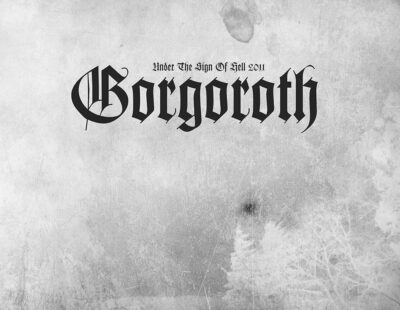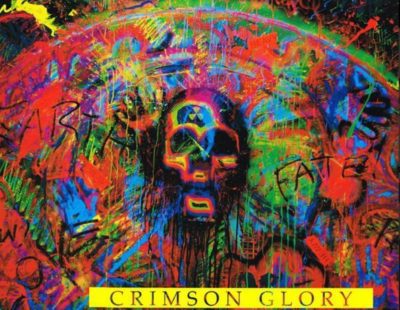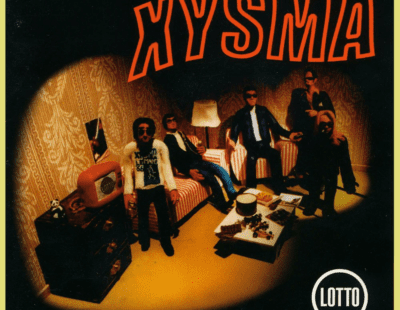
Almost every band has that album: you know, the critically and/or commercially reviled dud in an otherwise passable-to-radical back catalog. Occasionally, a Decibel staffer or special guest will take to the Decibel site to bitch and moan at length as to why everybody’s full of shit and said dud is, in fact, The Shit. This time around, Shawn Macomber defends Helloween’s Chameleon.
Maybe it’s a growing-up-stateside thing, but I can’t honestly say I’ve ever met a single headbanger who got into metal through Helloween. As a young teenager in the late eighties/early nineties, however, copies of Keeper of the Seven Keys: Part I (1987) were damn near ubiquitous amongst the black plastic cassette towers and dilapidated bedroom floors of sonically like-minded friends and acquaintances. It just seemed to be one of those purchases aspiring connoisseurs of riffs-n-pageantry heavy music made once they’d acquired all the requisite Priest and Maiden records. And, while manifestly not as immediate or instantly iconic as the seminal jams from either of those bands, Seven Keys: Part I is nonetheless a multilayered, vital offering that rewards engagement — the gallop-gallop-pause-to-pump-fist-gallop-gallop riffage, operatic vox, general swagger, and otherworldly, epic-rager-at-the-Elysian-Fields vibe are all seriously on point. *
“Listen now, we are calling you,” Michael Kiske croons during the breakdown of “Halloween” before wailing, “And there is magic in the air!”
It is a beckoning and a boast that holds up and reverberates thirty goddamn years later – not to mention carried on through the subsequent, likewise sick heavy metal sequel Keeper of the Seven Keys: Part II (1988), Master of the Rings (1994), and beyond.
Of course, if that was the whole story, the German power metal progenitors wouldn’t need this pro bono – and, yeah, unsolicited — closing argument from your friendly public defenders at the Justify desk of Decibel HQ.
Here is how the official Helloween bio memory-holes the years and releases between 88 and 94:
After some dark years of legal disputes with their record label**, the departure of guitarist Kai Hansen, rather experimental musical output, and the tragic suicide of founding member and former drummer Ingo Schwichtenberg in 1995…
“Rather experimental musical output” is something of an understatement. As Kiske explained when asked in a 1991 interview about the eccentric, not-so-metal title of the Seven Keys: Part II follow-up Pink Bubbles Go Ape, “We felt like, ‘Let’s do something really stupid.’”
Indeed, if you want to see one of the greatest collisions of “rather experimental” and the gloriously stupid, the video for “Kids of the Century” sure does fit the bill:
Visual aesthetic, songs christened “Heavy Metal Hamsters” and “I’m Doin’ Fine, Crazy Man,” and the whacked-out thirty-six second circa-Smiley Smile Brian Wilson-esque title track aside, however, the departure really isn’t quite as crazy as advertised: If the record had been dubbed Keeper of the Seven Keys: Part III rather than Pink Bubbles Go Ape it very likely would be accepted as canonical Helloween — approximately sixty percent of the material is the band’s trademark tight-as-fuck power metal and the remaining forty percent is defiant/delusional “We’re gonna be bigger than ever without you, Kai!” cock rock. Unless you are completely allergic to 80s hair metal, there is no need to fear this reaper.

Chameleon, meanwhile, is an entirely different story; a nutty amalgamation of Yngwie Malmsteen-ish weirdly refined classical/metal crossover, blues-y stadium rock, Brit pop, synth-heavy prog rock, folk, big band swing, some straight-up pre-Trans-Siberian Orchestra Trans-Siberian Orchestra metal sprawl and — if you can believe it — more.
The credits to this monster almost sounds like a bad joke: A conductor, church organist, a violinist, and a Hamburg children’s choir, and Helloween walk into a bar… It isn’t difficult to see why longtime fans felt the band too-fully embodied a certain Chameleon track:
Hearkening back to Wilson once more, the album cover really should’ve been a piano in a sandbox with an evil jack-o-lantern sitting on its lid.
Thus, if you want to enjoy the very real, kaleidoscopic charms of Chameleon — and just FYI, you do — the key is not to place it in the context of the Helloween discography. Rather, view it through a lens similar to the one we use for TCB Band-backed era Elvis — sure, the attack and level of distortion are vastly different, but there is a kindred kissing cousin vibe that unites the kinda-ridiculous-kinda-awesome bloated shuffle of the two.
Chameleon is, in other words, a Las Vegas revue for power metal — yeah, maybe trying a little too hard to be hip and appeal to every fan of every sub-subgenre, yet, at the same time, relentlessly grandiose, frequently brilliant spectacle for anyone willing to approach the record with a buy-the-ticket-take-the-ride mentality.
The commercial and critical response to Chameleon all but guaranteed it would be a one-off oddity — Schwichtenberg and Kiske both got sacked in the aftermath — a state of affairs for which we should probably be grateful.
Still, if a bunch of virtuoso musicians getting in touch with their inner Zappa and going way, way the fuck down the rabbit hole — unapologetically thumbing their noses at every single heavy metal convention and boundary throughout the entire descent — sounds like your bag, turn the lights off and crank Chameleon. The simple fact that it exists is its own category of extremity and it’ll flabbergast and amuse those who open their minds to it in equal measure.
* Adapted from my blurb on the album in the Decibel Old-School Heavy Metal issue.
** For much, much more on this story, pick up a copy of David E. Gehlke’s Damn the Machine: The Story of Noise Records from the Decibel store.






